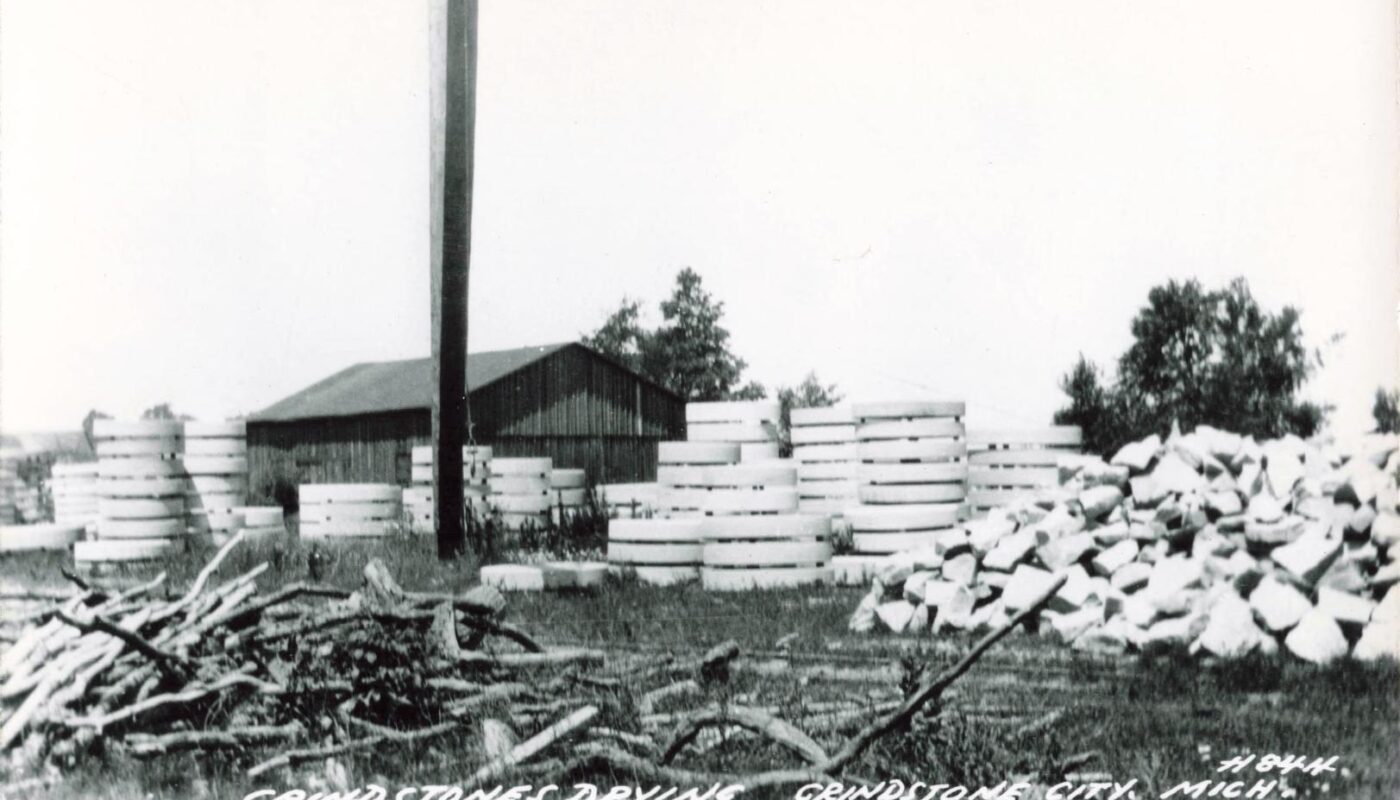Grindstone City, Michigan, earned its name from the sandstone quarries that once fueled a booming grindstone industry in the late 19th and early 20th centuries. This historic photo shows rows of freshly cut grindstones stacked neatly in the yard, drying before shipment to markets across the country and overseas. The region’s high-quality Berea sandstone was prized for its durability, making these grindstones essential tools for sharpening knives, tools, and machinery parts in an era before electric grinders.
The process began with quarrying massive sandstone blocks, which were then cut into circular shapes using specialized saws and chisels. Skilled workers refined each stone by hand, ensuring a uniform surface and precise dimensions. Once shaped, the grindstones were left to dry in open air, as seen here, before being loaded onto ships or railcars for transport. The piles of irregular stone fragments in the photo are likely trimmings and unusable pieces from the cutting process.
At its peak, Grindstone City’s industry produced thousands of grindstones annually, shipping them worldwide. By the mid-20th century, demand waned with the rise of synthetic abrasives and powered grinding equipment, leading to the closure of the quarries. Today, this quiet lakeside community stands as a reminder of the era when its name was known in workshops far beyond Michigan’s Thumb.




